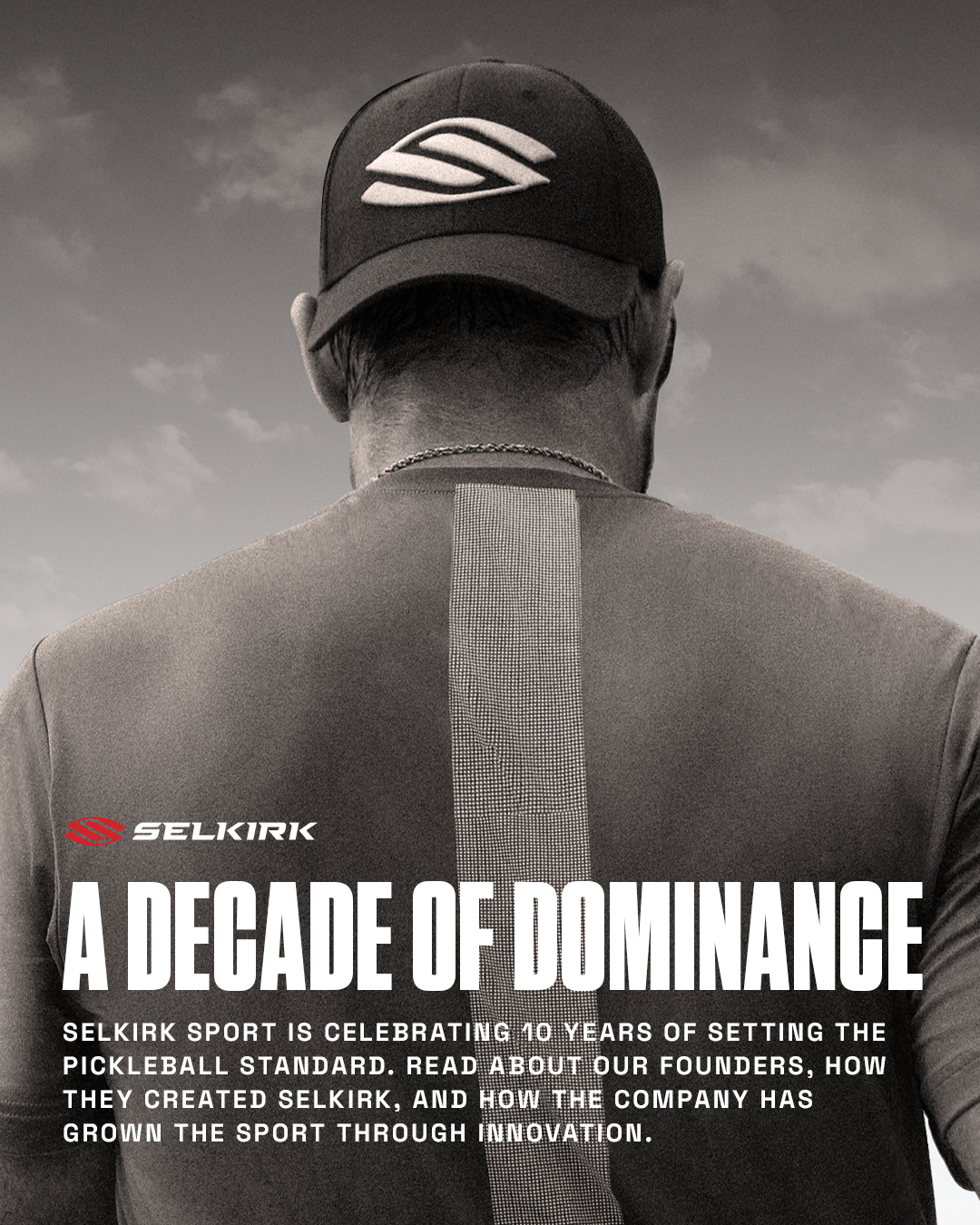For every player, choosing the correct shot for each scenario is crucial to winning a match. However, it is especially important for senior players.
Choosing the correct shot can help buy time to gain better court positioning, which gives you and your partner a higher chance of winning each point.
In a new Selkirk Pickleball TV series, “Senior Success,” senior professional pickleball player Steve Paranto shares tips for seniors who play pickleball. In this episode, Steve talks through the various shots you can make and when you should execute them.
The importance of shot selection
If you can choose the best shots for each scenario, your chances of winning increase. In most instances, poor shot selection comes down to the fact that many players don’t feel comfortable hitting a lot of shots.
The best way to overcome that discomfort is by practicing a variety of shots, including drops, drives, volleys, put-aways, lobs, and adding spin.
How to improve shot selection
The first thing you should do when facing a new opponent is scout their strengths and weaknesses. Compare these against your favorite shots.
Do you have a favorite shot that can take advantage of a weakness in their game? For example, if your opponents prefer a fast-paced, hard-hitting game, it would be advantageous to force them into a soft game where you may cause them to make more errors than they would in a volley battle.
Remember, you may not always get to use your favorite shots. For example, if you and your opponent both like hitting the ball hard, you may find yourself in a lot of fast-hand battles. This is fine if you are winning the majority of the points.
However, if you find yourself losing a lot of points, it’s time to switch it up. Try initiating the soft game to see how your opponents fare.
Return to the weaker player
As you scout your opponent, take note of which player has weaker third shots. If a player has an issue making third shots or they only execute one type of shot, hit your return of serves toward them.
This simple tactic can win you a lot of points before your opponents even make it to the kitchen line.
You can also consider hitting the return of serve to the middle of the court to cause confusion or shallow to the net to force your opponents to scramble to receive the ball.
Mix up your serves
Many senior players are not as mobile as younger players. Simply mixing up your serves — either through positioning or pace — can throw of your opponents, setting you up for a winning point.
Consider adding these serves to your repertoire:
- Hard drive serves. Aim hard-hit shots toward the baseline. If you have a strong forehand, just continue that motion.
- Soft lob serves. This should be a high-arcing slower serve that lands near the baseline. This serve forces your opponent to create a lot of power on their return.
- Short serves. Use a shorter backswing to hit the ball just past the kitchen line. This will force your opponent to move quickly to the ball, often causing an error.
- Wide serves. Force your opponent to move laterally on the court by hitting serves to the corners of the service box. If you notice your opponent favors their forehand, force them to hit a backhand. If they set up in one corner of the service box, hit it to the other.
Reset more than you think you should
The biggest mistake many players make with shot selection is neglecting to reset the ball. It’s natural when your opponent is hitting hard volleys at you to want to fire back at them. However, if you’re not in a good position to do so, you will lose points.
If you are off-balance or stuck in the transition zone, it’s better to loosen your grip and reset the hard-hit volleys into the kitchen. Then, move to the kitchen line where you can get back into a controlled position before initiating an aggressive play.
Whenever you can hit a lift dink — or a dink hit off the bounce — do so. This will give you more time to transition back to the kitchen line.
Watch what your partner is doing
Shot selection isn’t just about you. You also need to watch what your partner is doing.
For example, let’s say your partner is pulled wide off the court by a really good dink. They haven’t yet recovered and your opponent sends a hard-hit volley toward you.
It is not a good time to get stuck in a volley exchange. Because your partner is not there to back you up, your opponent can easily hit a put-away volley to the open portion of the court.
Instead, aim to reset the ball or lob it over your opponent to give your partner ample time to reset back to proper court positioning.
It’s important to note that if you are the partner getting pulled wide, you should also not aim to hit a winner. Simply dink or reset the ball back over the net.
Often, a player who is pulled out of position by a hard-hit shot will attempt to hit a hard drive to end the point. However, this creates an easy opportunity for your opponent to put the ball away in the open court before your partner even has a chance to react.
When to consider a lob shot
Lobs are becoming more and more popular at high-level pickleball, but they are perhaps most valuable in the senior game. Here are a few instances in which you should consider lobbing the pickleball.
During extended dink rallies. If you and your opponents are stuck in an extended dink rally, it might be time to consider shaking up the pattern. Wait until your opponent is positioned right against the kitchen line with their weight forward. The trick here is to make your lob look like a dink so you can take them by surprise. Aim the lob up and over your opponent’s non-dominant shoulder. It should land near the baseline of the court. If your opponent is athletic and able to jump well, the lob may not be your best choice. On the third shot. Of course, the most popular third shots are the drop and drive. However, there is a place for a third shot lob. If your opponent hits a weak or short return, you can aim the lob over their head as they are transitioning toward the kitchen. This will make it difficult for them to change direction quickly enough to receive the lob.
When to avoid “paddle battles”
When seniors are playing younger players, it is often prudent to avoid fast-paced battles at the kitchen. Younger players often have faster reflexes and are better able to track the ball.
Instead, focus on dinks and well-placed shots that force your opponents to move a lot.
Download the Selkirk Pickleball TV app HERE to watch the complete episode and many other Selkirk TV original shows, podcasts, lesson series from the pros, and much more.























































